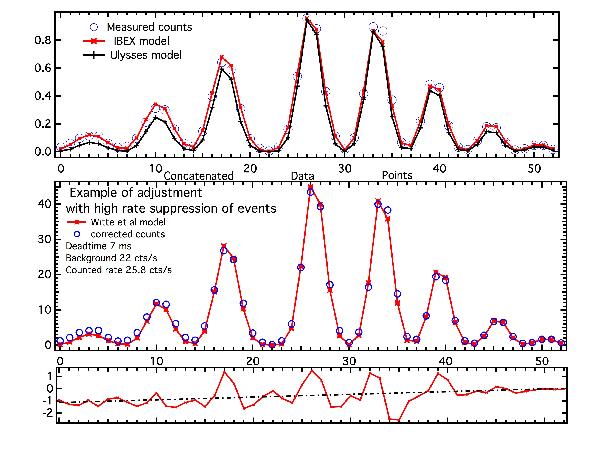Fig. 2

Top: concatenated data and model values taken from Bzowski et al. (2012) for orbits 13 to 20 in year 2009. Both data and model have been precisely computed by the authors for the same geometry and the same time intervals. The abscissa represents the data point number, and both data and models are the normalized values of Bzowski et al. (2012). The Witte et al. model decreases more rapidly than the count rate for Earth ecliptic longitudes that are both lower and higher than the maximum flux longitude λE. Middle: example of scaling of the Witte et al. model to the count rates assuming a dead-time of 7 ms, a maximum count rate of 25.8 counts/s due to He atoms and an electron background of 22 counts/s. Units are counts/s. The sum of squared residuals after normalization is slightly higher than for the Bzowski et al. (2012) parameters (see text) but there is no model parameter adjustment here, unlike in their work. Similar residuals can be obtained for realistic ranges of the three above parameters. Bottom: a small asymmetry is found in all residuals, that we attribute to the fact that the Witte et al longitude is slightly too high compared to the actual flow longitude. A lower longitude should significantly improve the data-model agreement. New studies taking the dead-time into account should allow to obtain very accurate flow parameters.
Current usage metrics show cumulative count of Article Views (full-text article views including HTML views, PDF and ePub downloads, according to the available data) and Abstracts Views on Vision4Press platform.
Data correspond to usage on the plateform after 2015. The current usage metrics is available 48-96 hours after online publication and is updated daily on week days.
Initial download of the metrics may take a while.


